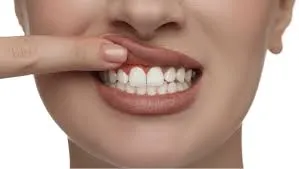
levels. A mouthwash with 0.25% lemongrass oil can reduce plaque more effectively than chlorhexidine gluconate, which is a proven anti-bacterial rinse used to treat gum inflammation. A lemongrass oil rinse is easy and quick to make, but it can be potent. To create one, simply add two to three drops of lemongrass oil to a cup of water. Swish for 30 seconds and spit. You may want to start with just one drop and increase the amount if it doesn’t bother.
Baking soda
Sodium bicarbonate is an effective ingredient to use on your teeth and gums. It works against harmful mouth bacteria, and it also neutralizes acids that cause inflammation and damage of tooth surfaces. As an added bonus, sodium bicarbonate breaks down stains and can brighten teeth. You can make a paste by mixing a small amount of baking soda with water and gently brushing on your teeth. This slurry provides one method of cleaning, but it’s important to include other anti-bacterial compounds in your routine.
Green Tea
Green tea contains many antioxidants which could help to lessen inflammation. The antioxidants in green tea can help to reduce the immune system’s inflammatory response to bacteria in the mouth. This, in turn, helps to reduce the damage done to gums and the supporting jawbone. Polyphenols are also known to restrict the growth of bacteria that leads to gum inflammation. Green tea is not only good for overall health, but it’s a delicious alternative to coffee that many people enjoy.




































